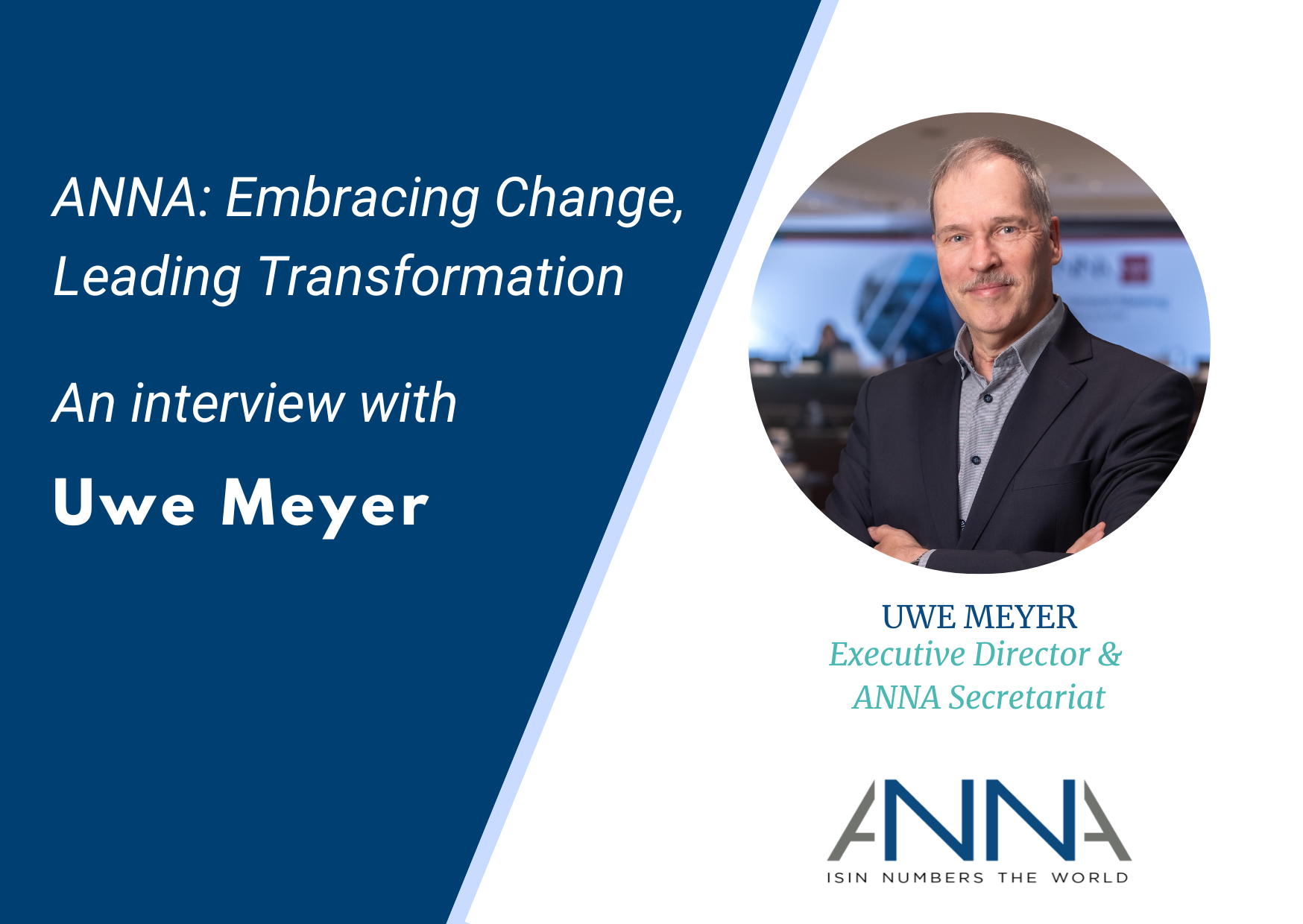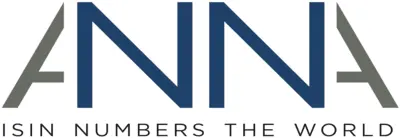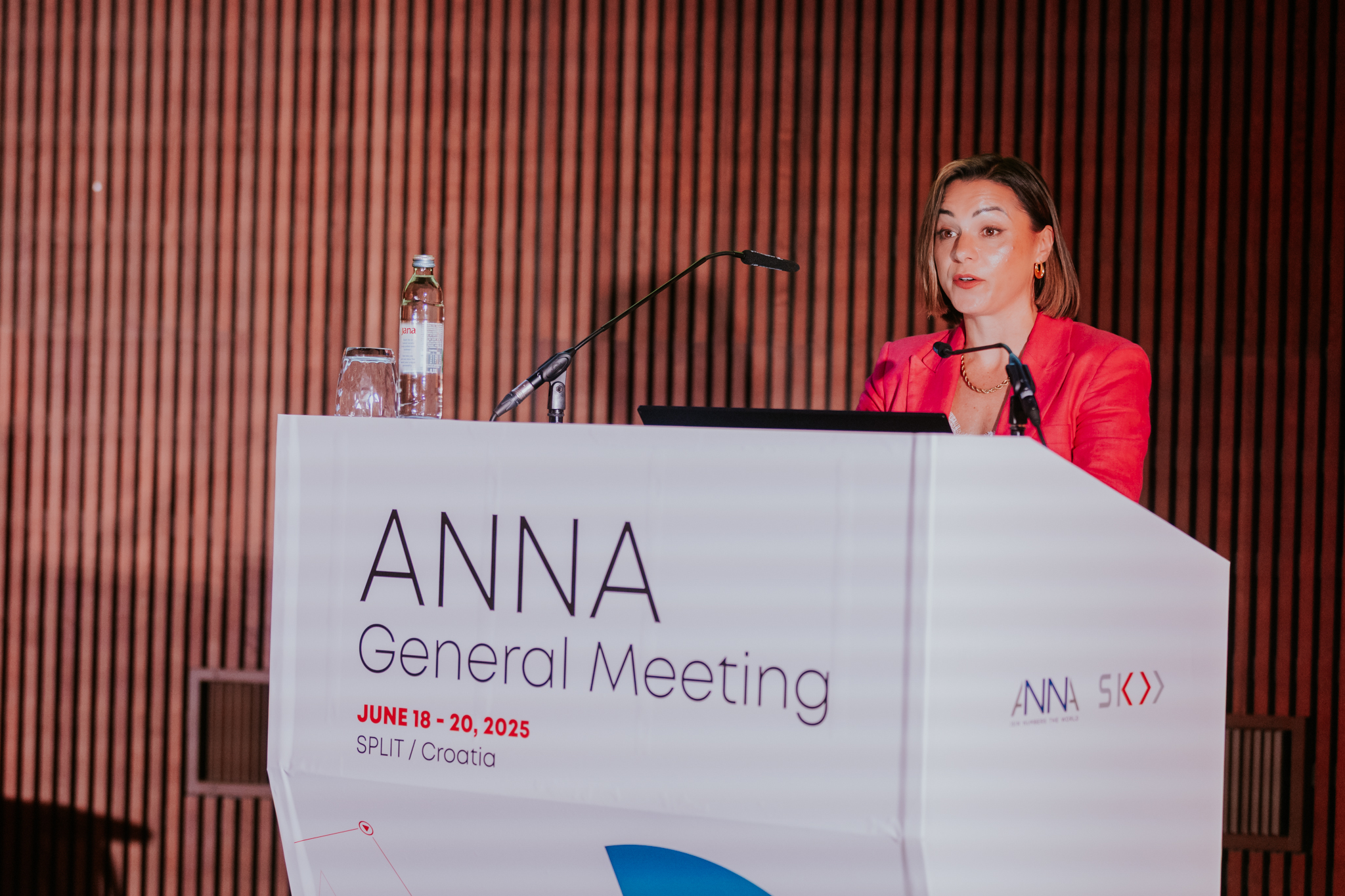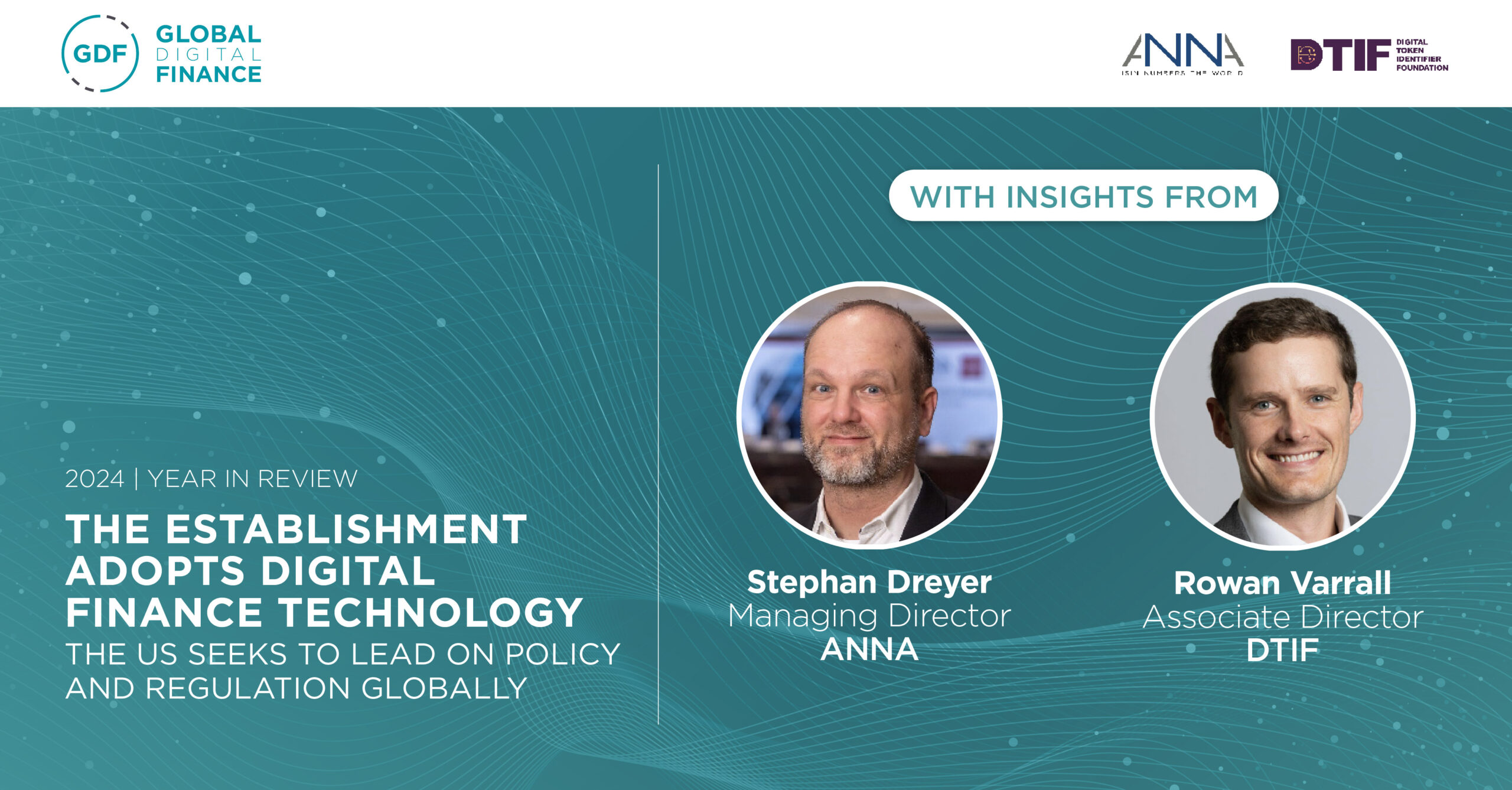First published on TabbFORUM, 25 June 2025. A universal language Consensus-based financial standards developed by…

ANNA: Embracing Change, Leading Transformation
“Four decades ago we were a ‘start-up’ membership association in a highly fragmented industry, driven by a clear need for standardisation. Today, we are a mature organisation and a mechanism that both industry and regulators rely on. This is the single biggest change ANNA has gone through and we don’t plan to stop here. We have the people, the skills and the experience to respond to evolving industry requirements as we set our sights on emerging developments that will benefit from expanding cross-industry collaboration efforts and standardisation.”
Uwe Meyer, Executive Director & ANNA Secretariat, reflects on the metamorphosis of markets, the globalisation of ANNAs work, and the exciting opportunities that lie ahead.
ANNA: Evolution through the decades
Much has been documented about the evolution and significance of the International Securities Identification Number (ISIN) which has been THE global International Organization for Standardization (ISO) standard for unique identification of financial and referential instruments for over 40 years.
In fact, the reason the ISIN is still essential for the unique identification of equity, debt, derivatives and other types of financial and referential instruments, and is now evolving into digital asset markets today, is largely attributable to the work and commitment of ANNA.
ANNA’s development through the decades has been driven by a number of huge shifts in market conventions, industry activities, technological advancements, major events and ever-evolving regulatory requirements. Reflecting on the different stages of our evolution, ANNA will continue to drive engagement with our members, the NNAs, industry and regulators alike as we navigate ever-changing market developments.
ANNA: The early days
Like any start-up/newcomer organisation, ANNA was born out of a need to solve industry wide problems. In the 1990s the industry was very fragmented, established standards were not utilised, and securities identifiers for the purpose of settlement efficiencies or risk tracking were not at the fore.
ANNA started out with just 22 National Numbering Agency (NNA) members seeking to foster standardisation within the financial industry by upholding ISO principles and promoting the ISIN.
At that time, and into the 2000’s, markets opened and grew with derivative products and stock exchange activities growing exponentially.
Market participants started to recognise the benefits of identifier standards and began to come together to promote ISIN as well as the ISO 10962 Classification of Financial Instruments (CFI) standards.
As a result, we experienced a period of rapid growth and expansion, witnessing our biggest growth in NNA membership as more stakeholders realised the benefits of an identifier system and promoting this through the coordinated joint efforts of an association.
In fact, today, we are now a global member association with 120 members and counting.
ANNA Taking Centre Stage in the Identifier Space
Over the next decade, from 2000 to 2010, ANNA established itself as the central point for identifiers, building the ANNA Service Bureau (ASB) – the central data repository that made ISINs and the associated reference data more widely available to the industry.
By the mid 2000’s, driven by the need to incorporate new instrument names, registration authority needs and Over The Counter (OTC) products, ANNA was foundational in bringing key standards initiatives to fruition that addressed these changing industry developments.
The ASB also evolved with its technical abilities expanding to align with technical advancements and ANNA was also greatly involved in driving the development of the Legal Entity Identifier (LEI) standard.
ANNA: responding to industry demand
The decade that followed the financial crisis of 2008, 2010 – 2020, marked a significant evolution point for ANNA.
Driven by the need for a specific industry solution for OTC derivative activity that contributed to the financial crisis, ANNA responded to industry requests and established the affiliate Derivatives Service Bureau (DSB) in 2017. The DSB is the first global numbering agency designed to meet the requirements of the derivatives markets, becoming the global provider of ISINs, CFIs and FISNs for OTC derivatives.
From this point onwards, ANNA was firmly embedded with both industry and regulators, who have since become key stakeholders for ANNA.
In 2018 ANNA worked closely with the Global Legal Entity Identifier Foundation (GLEIF) which led to the signing of a new initiative to link ISINs and Legal Entity Identifiers (LEIs) in 2019. In October 2023, the DSB went on to launch the global Unique Global Identifier (UPI) Service for OTC derivatives – a service that enables users to meet new mandatory UPI reporting requirements that are being introduced currently and that supports the aggregation that global authorities need to monitor systemic risk.
ANNA today: answering the needs of industry and regulators alike
Regulatory regimes continue to develop and progress and ANNA has increasingly been involved with regulatory coordination. ANNA now holds and nurtures close relationships with regulatory authorities, actively contributing to regulatory consultations and the development of solutions across industry ecosystems.
Digital assets are now the emerging markets of this generation and another area where ANNA is answering the demands of the industry through its 2023 partnership with the Digital Token Identifier Foundation (DTIF). This partnership brings established ISIN standards together with new Digital Token Identifiers (DTIs) for digital assets to enhance transparency in the digital asset market by distinguishing between an ISIN-identified asset itself and its blockchain-based implementation- an integration that reduces operational complexity and cost, whilst enabling transparency by providing a clear link between an asset and a digital token(s) that relate to the asset.
ANNA issued the first set of ISINs for crypto assets in November 2023.
Looking ahead: embracing cross-industry collaboration
Although history provides learning and experience, it is always difficult to say what industry demand or development will drive the next stage of ANNA’s development. While we could not have predicted some of the directional changes that have taken place in the industry, we can say with utmost certainty that ANNA has, and will continue to, evolve as a leading, professional industry body.
Some of the key developments we are actively keeping an eye on include:
- ESG: a topic that is particularly pertinent to the whole industry now and one where ISO already has several working groups dealing with these topics. ANNA will stay close to the standards committees relating to the ESG business cases that are building as there is recognition and learning from our timeline that can aid collaborative discussions and prevent development in isolation. Sustainable Finance is a particularly aligned area where we can make sure that there is an awareness of good existing standards-exploration into the augmentation of additional reference points can expedite the development of standards here without the need for new identifier creation.
- Emissions and the path to Net Zero: ANNA already allocates ISINs for carbon credits and emission allowances instruments and it is expected that these will also become even more important in the future.
- AI: we are witnessing the emergence of AI and its application in the financial services industry- this is something that we will need to monitor and research to fully understand the implication for existing standards and the potential needs for new future standards. Given our experience and the critical role that standards play, we will certainly advocate protocols and safeguarding and regulatory frameworks start to emerge.
A critical aspect of our work going forward will involve the advocacy of further cross-industry collaboration. All these developments have a multitude of stakeholders, from regulatory to industry bodies and working groups, to financial institutions and technology vendors with unique, often niche expertise. We need to listen carefully, assess how the standardisation efforts of other committees affect our work and collaborate across traditional/historical siloes.
And on a personal note…
Most members participate on a voluntary basis whilst carrying out their primary job functions.
The biggest source of personal satisfaction I have gained from ANNA’s development over the years, and that I know I will get from the years to come, is the interaction with the wealth of fascinating members and stakeholders that come together to work, socialise and learn from each other.
The ANNA brand and our work has gained hugely visibility over the years and we have worked hard to ensure that individual representatives and their organisations recognise the invaluable input they bring to all aspects of the ANNA work. The educational programme and wider promotion of the benefits of identifier standards are certainly a given going forward.
ANNA has accomplished much and we will continue to monitor, contribute, moderate and deliver to move the industry forward, whatever the future direction will be.




Comments (0)